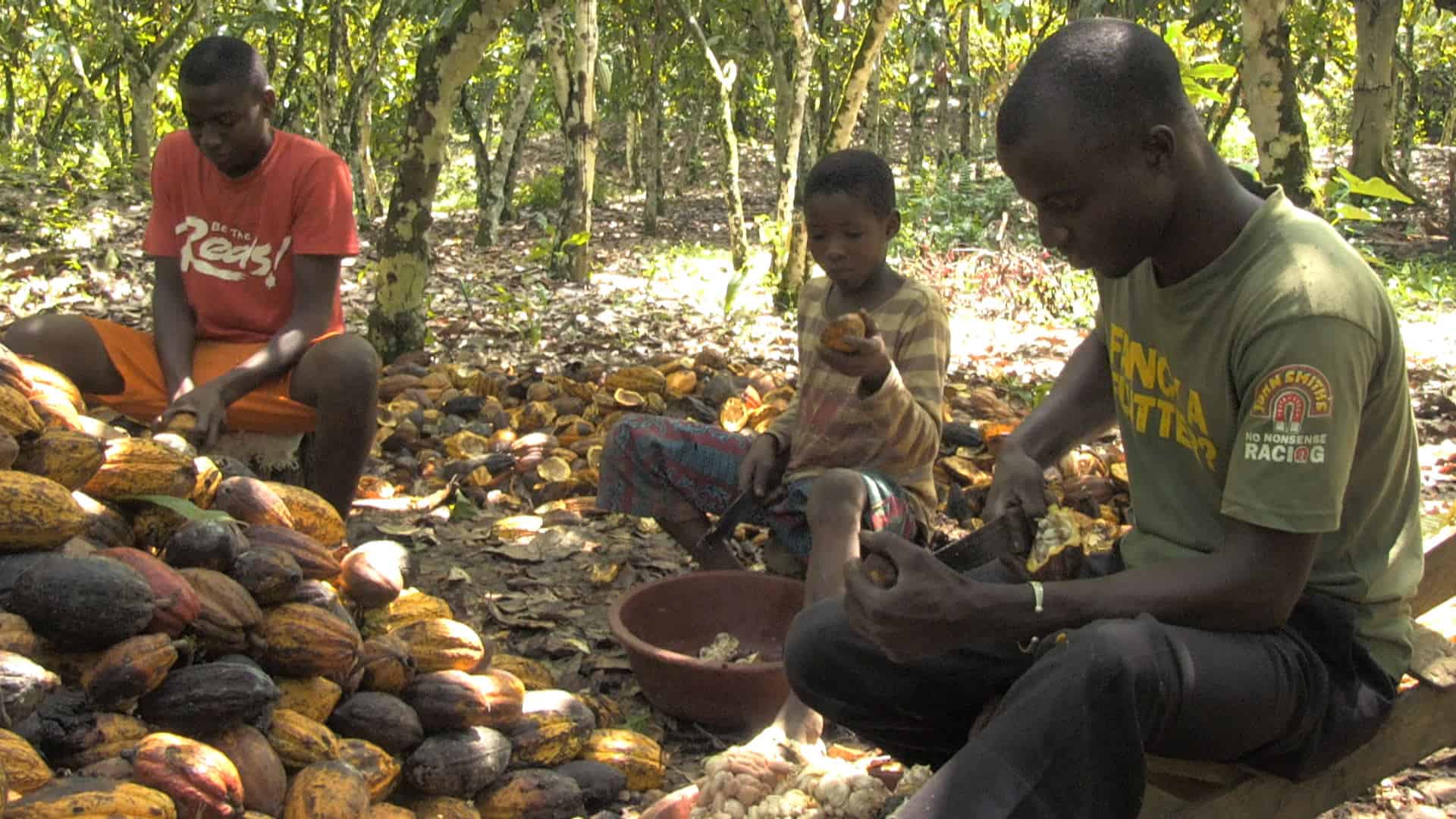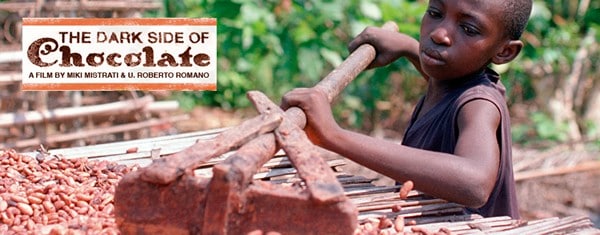“The Dark Side of Chocolate” is a 2010 documentary scripted by Miki Mistrati and directed by U. Roberto Romano. The film investigates the slavetrading of a large number of African children who are exploited in cocoa plantations in Ghana and Ivory Coast, that provide with their chocolate approximately 80% of the world.
This worldwide problem was first investigated in 2000, by the BBC documentary film “Slavery: a Global Investigation” that brought to light the child slavery in Africa and in Northwest India. So, in 2001 the major chocolate’s producers, who are members of the Chocolate Manufacturers Association, signed the Cocoa Protocol, that interdicted child trafficking and labor in cocoa industry, promising to work for a total eradication of child labour in the cocoa sector after 2008. But 10 years later “The Dark Side of Chocolate” showed us a different reality: in the Ivory Coast area, where cocoa plantations are mainly located, the children’s trafficking and exploitation are still unsolved problems.
“The Dark Side of Chocolate” , produced by Bastard Film for DR TV, NDR, TSR, SVT, YLE & ERR, had a strong impact on the public opinion, especially when the chocolate industries denied to see and comment the film and they only issued a press release where a significant passage is: “The vast majority of cocoa farms are not owned by the companies that make chocolate or supply cocoa and we therefore don’t have direct control over cocoa farming and labour practices”, not accepting responsibilities for these conditions.
We interviewed Kim Christiansen, distributor and sales agent of the distribution company Dr Sales, to tell us how and how much the distribution of “The Dark Side of Chocolate” has affected public opinion.
1- How many other countries, in addition to Denmark, Germany, Switzerland, Sweden, Finland and Estonia, decided to show the film on their channels? Did you experience difficulties distributing such a controversial film?
Sold to more than 25 territories (including Africa). No difficulties at all. But a lot of positive feedback from organizations and communities that are now working with the film.
2- What do you think is the most relevant impact produced by “The Dark Side of Chocolate” on the society and the public opinion?
The issue as a whole. So many years this film has been on the agenda in many countries and organizations – won a lot of prizes even many years after its release. So it should definitely be seen as well the film dealt with the issue and the industry in the bigger picture.
On the very small scale I know a lot of people only bying organic chocolate these days, which also helps.
3- Did you expect a stronger commitment from the singles governments or from the private companies involved in the cocoa market as happened with documentaries like “The end of the line” (which led to changing the law about the fishing industry inthe UK)?
Not really – we knew on forehand Nestlé and other organizations foreseeable reactions and their unwillingness to corporate – which is also perfectly shown in the ending of the film where the director take the film with on a big screen outside Nestle’s headquarter. Very Michael Moore kind of way– but in his own style. Also it should be mentioned that the director is one of the best investigative journalists in our part of the world so he knew – in corporation with lawyers and other journalists – what he was doing.
The EU Parliament has required an investigation to remove tax on goods not produced in Europe. That way companies like Nestlé can process the cocoa in countries like Cote D’Ivory and create jobs in the country. More so all big corporations, Nestlë Mars Mondelez and Ferrero have increased budget to fight illegal child labor in Cote D’Ivory. Last but not least, all major companies have created plans for only buying sustainable cocoa towards 2020 where all cocoa must be sustainable produced.
Article by Stefano Mutolo e Valeria Alberti



